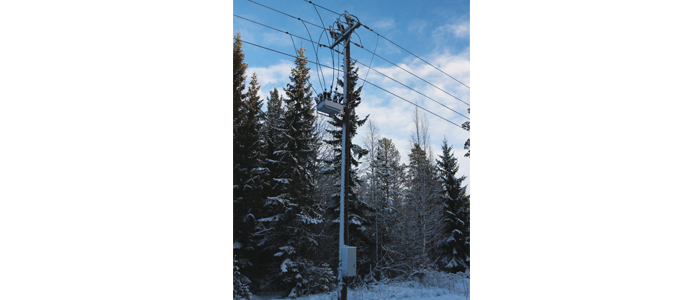- +61 7 3374 2877
- Email Us
Ljusdal Energi, a utility situated 350 kilometres north of Stockholm, Sweden, is a beacon of innovation and resilience in the energy sector. Operating in a predominantly rural and forested area, the utility faces unique challenges that require innovative solutions.
NOJA Power User Case Study- Ljusdal Energi, Sweden
Michael Halvarsson, the Head of Electricity at Ljusdal Energi, has been at the forefront of these initiatives. Hannah Kneubuhler from NOJA Power sat down with Michael to discuss the utility’s transformative journey in enhancing electricity network reliability and community well-being.
Hannah: Firstly Michael, could you tell me a little bit about Ljusdal Energi and your role as a Distribution System Operator?
Michael: Ljusdal Energi manages 7,000 connection points, 19,000 citizens and an area of about 935km². The network stretches from Edänge in the south to Hjärtvallen in the north, and is mostly woodland, making it a unique operational environment. There are approximately 100km of cable and 200km of overhead line in our 11 kV network, and our 0.4 kV network consists of approximately 115km of overhead cable and 354km of ground cable. In the grid area there are just over 250 grid stations, 70 sheet metal stations and about 30 other concrete stations.
We are part of a multi-functional municipality, and as the case with many other smaller utilities, my role is both technical and managerial. I manage all the field equipment, the automation schemes on the OSM Reclosers and the planning, documentation, customer service, and the usual array of engineering tasks. Given that we have a lean team of just eight people on the electricity side, I also find myself wearing the hat of a field engineer at times. No day is the same, which keeps things interesting for sure.

Hannah: What are some of the challenges you face on your network?
Michael: Our challenges are as diverse as the landscape we operate in. We have to deal with natural elements like wind, falling trees, lightning strikes, snows, and bears. Our town has the highest density of bears in Sweden, which brings extra challenges in accessing equipment and preventing bears from using poles as back scratchers. More relatedly, temperatures in Sweden can range from -53°C in the far northern Lappland region to +38°C in the South, which creates a harsh environment to operate reliably in. We are in the Gävleborgs Län region, which has a sub-Arctic climate where temperatures can drop to less than -30°C in winter and 60-80mm of rain in the summer months.
The distribution network in Sweden is of a high impedance compensated type. About 75% of all faults in our overhead network are earth faults, typically caused by a tree or a branch hanging on one of the phases. Given our network is also in a rural and forested area, these challenges are compounded as it takes a significant amount of time and money to travel to the rural area to address the fault.
Hannah: Working reliably in harsh environments is a challenge faced by many of our customers globally, but the bears are different! How did you make the decision to trial NOJA Power equipment on Ljusdal Energi’s network?
Michael: We were actually the first utility in Sweden to adopt NOJA Power equipment. I was in search of remote control isolated switches around 2011-2012 to address the challenges we were facing on our network. We discovered NOJA Power through the local distributor, Techinova, and as they say, the rest is history. The OSM Recloser’s advanced remote control capabilities, detection of low value earth faults and full industrial environmental range were the perfect solution for Ljusdal Energi’s network.